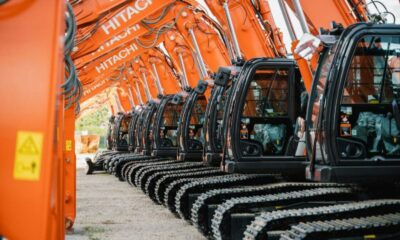Science
US will return to the Moon on January 25 after the last 50 years Apollo mission

The head of what might be the first private company to successfully land on the moon said that the United States will attempt to land a craft on the moon again on January 25, more than 50 years after the last Apollo mission.
There will be no one on board the lander, Peregrine. It was created by the American company Astrobotic, whose CEO, John Thornton, stated that the spacecraft would be equipped with NASA equipment to investigate the lunar surface ahead of NASA’s manned Artemis missions.
NASA decided to launch the CLPS program a few years ago, which involves US companies sending scientific experiments and experiments to the Moon.
These fixed-price agreements ought to facilitate the growth of a lunar economy and lower the cost of transportation services.
At a press conference held on Wednesday at his company’s Pittsburgh headquarters, Thornton stated, “One of the big challenges of what we’re attempting here is attempting a launch and landing on the surface Moon for a fraction of what it would otherwise cost.”
“Only about half of the missions that have gone to the surface of the Moon have been successful,” he stated.
“So it’s certainly a daunting challenge. I’m going to be terrified and thrilled all at once at every stage of this.”
December 24 is the planned launch date from Florida for the new rocket from the ULA industrial group, known as Vulcan Centaur.
After entering lunar orbit, the probe will take “a few days” to return, but Thornton said that to ensure that the lighting at the intended landing site is ideal, a landing attempt cannot be made until January 25.
Without human assistance, the descent will be carried out autonomously, but it will be watched over from the company’s control center.
The Japanese start-up ispace had already attempted to land on the moon as the first private company in the spring, but the mission failed. In 2019, Israel experienced a setback as well. Only four nations—the US, Russia, China, and, most recently, India—have made successful moon landings.
NASA has agreements with Firefly Aerospace, Draper, and Intuitive Machines in addition to Astrobotic.
The latter is scheduled to launch in January atop a SpaceX rocket.
According to Chris Culbert, the CLPS program manager, “NASA leadership is aware of the risks and has accepted that some of these missions might not succeed.”
“But even if every landing isn’t successful, CLPS already had an impact on the commercial infrastructure needed to establish a lunar economy,” he said.
NASA intends to build a base on the moon through the Artemis program.
-

 Sports4 weeks ago
Sports4 weeks agoFIFA Club World Cup 2025: Complete List of Qualified Teams and Groups
-

 Sports3 weeks ago
Sports3 weeks agoAl Ahly vs Inter Miami, 2025 FIFA Club World Cup – Preview, Prediction, Predicted Lineups and How to Watch
-
Health1 week ago
Back to Roots: Ayurveda Offers Natural Cure for Common Hair Woes
-
World4 weeks ago
Omar Benjelloun: Strategic Architect Behind Major Financial Deals in the MENA Region
-

 Tech2 weeks ago
Tech2 weeks agoFrom Soil to Silicon: The Rise of Agriculture AI and Drone Innovations in 2025
-

 Sports3 weeks ago
Sports3 weeks agoFIVB Men’s Volleyball Nations League 2025: Full Schedule, Fixtures, Format, Teams, Pools and How to Watch
-

 Science4 weeks ago
Science4 weeks agoEverything You Need to Know about Skywatching in June 2025: Full Moon, New Moon, Arietid Meteors, and Planetary Marvels
-

 Startup3 weeks ago
Startup3 weeks agoHow Instagram Is Driving Global Social Media Marketing Trends

























